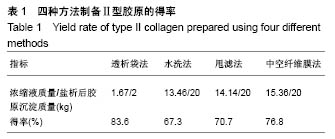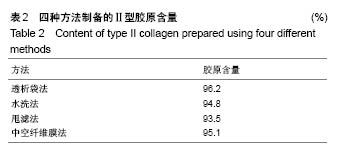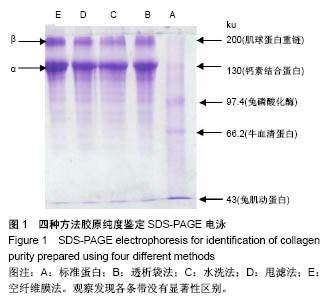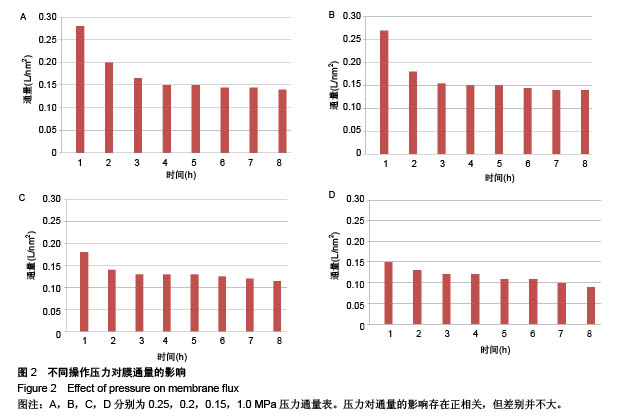| [1] 蒋挺大.胶原与胶原蛋白[M].北京,化学工业出版社,2006:145.[2] 李玉瑞.细胞外间质生物化学及研究方法[M].北京:人民卫生出版社,1988:31.[3] 顾其胜.胶原蛋白与临床医学[M].上海:第二军医大学出版社, 2003:109-118.[4] 冯志民,徐蘅, 动物组织钟羟脯氨酸测定方法的建立及初步应用[J]. 南京铁道医学院学报, 1999,18(3):168-170.[5] 钟朝辉,李春美,梁晋鄂,等.鱼鳞蛋白提取工艺的优化[J].食品科学, 2006,27(7): 162-166.[6] 曹慧.鸡胸软骨Ⅱ型胶原的制备及功能性研究[D].无锡:江南大学, 2008. [7] 陆雪芹.鸡胸软骨粉的制备及其对类风湿性关节炎的作用[D]. 无锡:江南大学,2008.[8] 专利:非变性Ⅱ型胶原生产方法,专利号CN201110065733.X [9] (日)胶原蛋白实验方法[M].刘平,译. 上海:上海中医学院出版社, 1988:20-38.[10] 陈世宣,刘益杰,胡笑燊,等.基于瞬时受体电位香草素亚家族4信号通路探讨牛蒡子苷元对体外培养软骨细胞增殖及Ⅱ型胶原蛋白和软骨蛋白聚糖表达的影响[J].中医正骨,2017,29(10):13-19.[11] 车帅,杜芬,刘楚怡,等.中华鲟软骨Ⅱ型胶原蛋白的结构分析[J].食品工业科技,2018,(4):60-63.[12] 关丽,毋丹丹,胡东生,等.口服牛Ⅱ型胶原蛋白诱发类风湿关节炎大鼠模型的建立及评价[J].江西师范大学学报(自然科学版),2017, 34(5):516-520.[13] 周晓辉,常亚南,何晓亮,等.Ⅱ型胶原蛋白的结构、功能及其最新研究进展[J].河北科技大学学报,2017,31(2):202-208.[14] 张丽,张一云,符洪,等.黎药除湿祛风汤对鸡Ⅱ型胶原蛋白诱导关节炎模型大鼠的保护作用研究[J].中国药房,2016,27(22): 3088-3090.[15] 曹慧,许时缨,NaCL盐析提取酶解液中Ⅱ型胶原的工艺[J].生物加工过程,2010,8(4):22-26.[16] 刘志勤,刘浩,冯成宝,等.从牛软骨中提取Ⅱ型胶原蛋白及初步构建软骨支架[J].黑龙江大学自然科学学报,2016,29(3):386-391.[17] 吴雷,郑娟,刘文涛,李国英.鸡关节软骨Ⅱ型胶原蛋白结构及性能表征[J].食品与发酵工业,2016,(11):86-90.[18] 刘爱青,梁建,王海燕,等.Ⅱ型胶原蛋白工业化生产工艺及产品技术指标分析[J].肉类工业,2016,(2):31-34.[19] 张中航,陈振宇.不同部位肋软骨与耳软骨的Ⅱ型胶原蛋白差异性比较[J].中国处方药,2016,14(1):5-6.[20] Lamprecht G.Rapid method for the isolation of hydroxylysy lpyri dinoline and lysy lpyridinoline from concentration bone hydrolysates by liquid chromatographic techniques.Journal of Chromatography B.1997;691:297-304.[21] Reddy GK,Enwemeka CS.A simplified method for the analysis of hydroxyproline in biological tissues. Clin Biochem.1996; 29(3):225-229.[22] Rutschmann C, Baumann S, Cabalzar J, et al.Recombinant expression of hydroxylated human collagen in Escherichia coli.Appl Microbiol Biotechnol.2014;98:4445-4455.[23] Aubert-Foucher E,Mayer N,Pasdeloup M,et al.A unique tool to selectively detect the chondrogenic IIB form of human type II procollagen protein.Matrix Biology.2014;34:80-88.[24] Qi Q,Yao L,Liang Z,et al.Production of human type II collagen using an efficient baculovirus-silkworm multigene expression system. Mol Genet Genomics.2016;291(6):2189-2198.[25] Peng W,Wang L,Qiu X,et al.Therapeutic effects of Caragana pruinosa Kom. roots extract on type II collagen-induced arthritis in rats.J Ethnopharmacol.2016;191:1-8.[26] Gautieri A, Passini FS, Silván U,et al. Advanced glycation end-products: Mechanics of aged collagen from molecule to tissue.Matrix Biol.2017;59:95-108. |
.jpg)




.jpg)